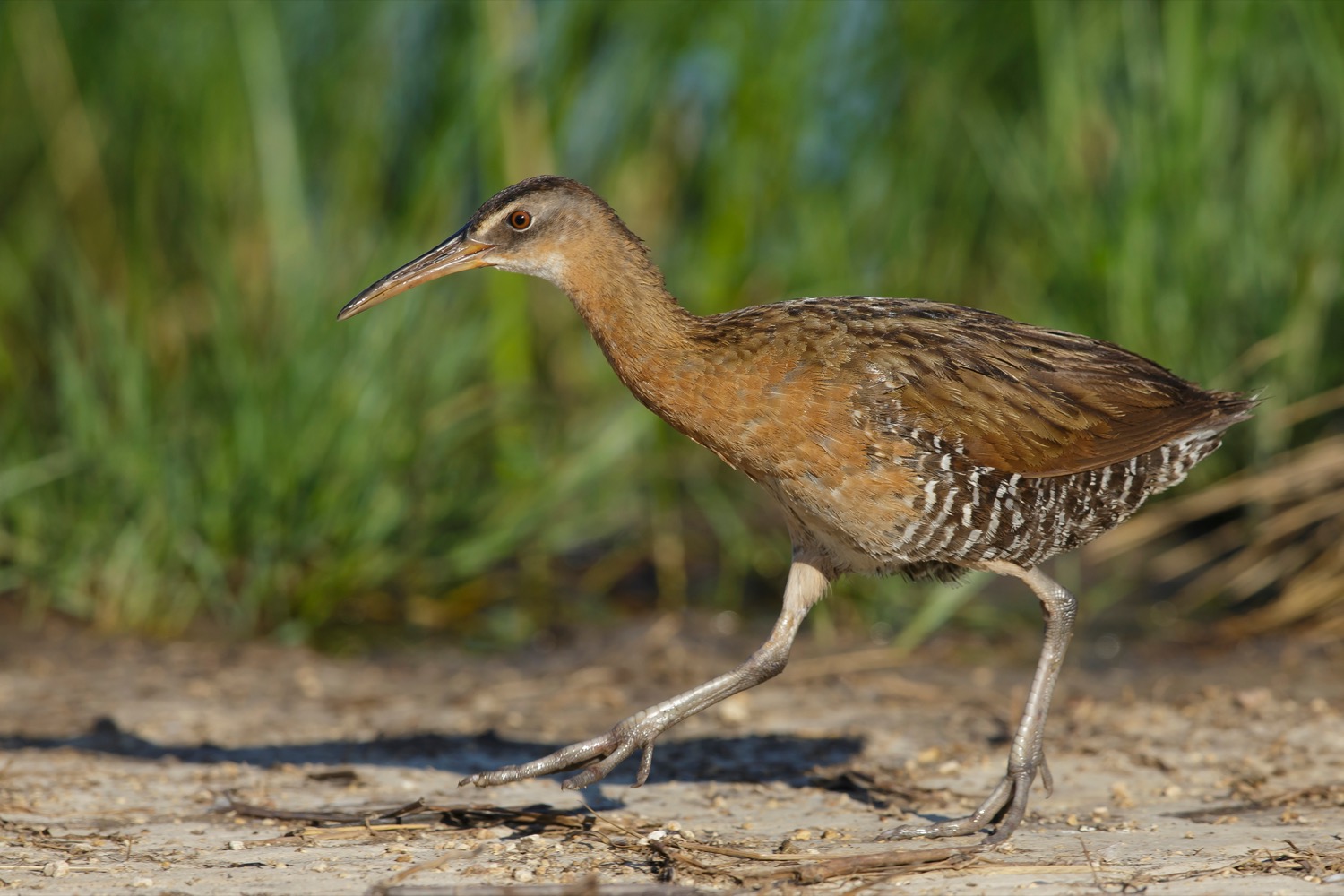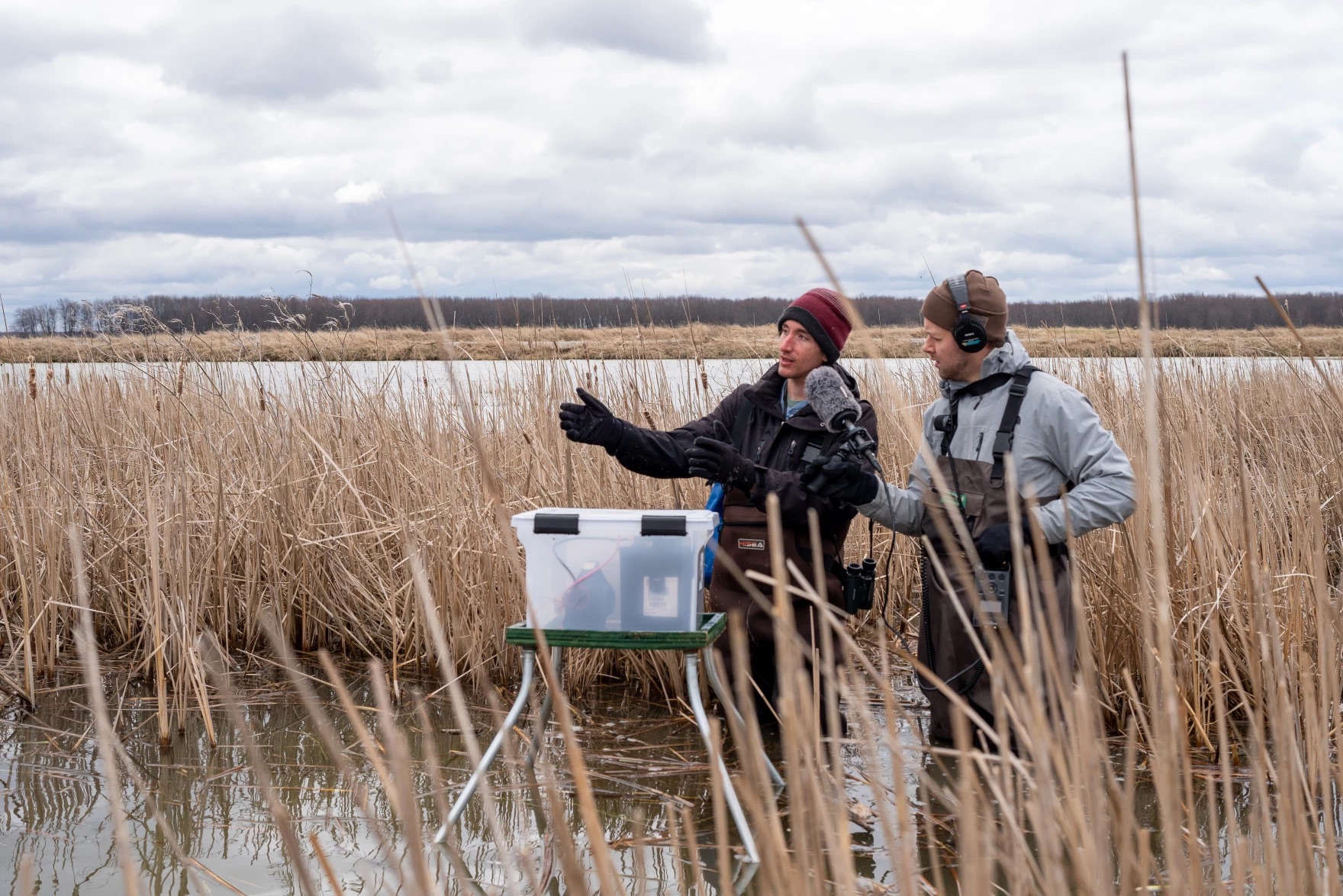Attracting Birds To Prime Habitat By Playing Recordings Of Their Calls
4:17 minutes

This article is part of The State of Science, a series featuring science stories from public radio stations across the United States. This story, by Dan Wanschura, host of the podcast Points North, was originally published by Interlochen Public Radio.
How do you know a restaurant is good? If the parking lot is full of cars, that’s a pretty good indication. If it’s empty, you probably won’t bother stopping.
In this case, the restaurant is a newly restored wetland in Michigan and the customers are rails. The birds migrate at night, so if they don’t hear other rail calls in an area, they’re not likely to stop. Researcher Dustin Brewer is broadcasting recorded rail calls to try to bring the secretive birds to prime habitat—to feed and mate. Rails are declining, mostly due to habitat loss. Experts say if rails are influenced by these recordings, it could help increase the bird’s population.

Invest in quality science journalism by making a donation to Science Friday.
Dan Wanschura is host of the podcast Points North, from Interlochen Public Radio in Interlochen, Michigan.
ROXANNE KHAMSI: This is Science Friday. I’m Roxanne Khamsi sitting in for Ira Flatow. And now it’s time to check in on the State of Science.
SPEAKER 1: This is KERA News.
SPEAKER 2: For WWNO.
SPEAKER 3: St. Louis Public Radio.
SPEAKER 4: Iowa Public Radio News.
ROXANNE KHAMSI: Local science stories of national significance. Have you ever heard the phrase, “thin as a rail”? Well, it turns out that old saying might have nothing to do with trains. Some folks claim it traces back to a skinny bird, one that loves to hide out in the dense vegetation of marshes. Rails are secretive and hard to spot, and in some parts of the US, they’re in decline. Human development has encroached on their prime breeding grounds. And those shrinking wetland areas are hard to find from the sky as they migrate.
So some researchers are playing audio recordings from restored wetlands to try to get them to swoop down. Dan Wanschura has been reporting on this research for the podcast Points North at Interlochen Public Radio in Michigan. He joins us now. Welcome to Science Friday.
DAN WANSCHURA: Hi, Roxanne. Thanks for having me.
ROXANNE KHAMSI: Can you say first a little bit something about what does their thin size have to do with their habitat?
DAN WANSCHURA: Yeah, researchers call them laterally compressed, which basically means really thin. But that allows them to be able to navigate and move in and out of these dense wetland areas and protect them from predators.
ROXANNE KHAMSI: But I’m curious what got the researchers interested in helping them.
DAN WANSCHURA: Yeah, so really, across the Midwest and the Great Lakes basin, there’s been a substantial loss of natural wetlands because of development. That poses a problem for rails because the habitat becomes less and less predictable. When they are migrating, they migrate at night. So they might not be aware of prime habitat visually. That’s what this project centered around, this idea to play audio recordings of the rails.
Mike Ward is an avian ecologist from the University of Illinois. He’s actually done this sort of research in about a dozen bird species. He describes the idea of what they’re trying to do. And he likens that to a restaurant.
MIKE WARD: As if you go by a restaurant and there’s no one there, then the thought is, it’s not very good. You go by another restaurant, there’s a bunch of cars there– you think, well, that must be the place to go. You stop and eat there. Well, the same could be true for birds. So these birds are migratory. They fly by a wetland and just missing that social cue.
ROXANNE KHAMSI: So they’ve got speakers in the wetland, or what was the kind of arrangement that they had going on?
DAN WANSCHURA: Yeah, an audio device that is loaded with a bunch of recorded rail calls, four different kinds of rail species. This will play on a loop just after sunset and just before sunrise to try to lure or trick these rails migrating, try to trick them down into checking out this habitat.
ROXANNE KHAMSI: And I think we have some tape, too, to listen to.
DAN WANSCHURA: Yeah, this is of a king rail, which is pretty rare in the Midwest. This is the king rail call.
[KING RAIL CALL]
ROXANNE KHAMSI: Yeah, I think I’ve heard a lot of birds in my life, but it’s just not very lyrical.
DAN WANSCHURA: Yeah, it’s abrasive, I would say. Some of the rail calls are pretty abrasive. But for a rail, it’s a siren call.
ROXANNE KHAMSI: Let me ask you, is this working? I think that’s the biggest question on my mind.
DAN WANSCHURA: So preliminary data shows that, yes, there has been a positive response to the rail calls. In fact, he recorded king rail, which, again, is pretty rare in the Midwest, right near one of these audio playback sites. And that’s pretty good evidence that the audio playback drew in that king rail.
ROXANNE KHAMSI: I love this idea of making these wetlands so appealing to the birds. Dan, thank you so much for sharing your reporting with us.
DAN WANSCHURA: Thanks so much, Roxanne.
ROXANNE KHAMSI: Dan Wanschura is the host of the podcast Points North at Interlochen Public Radio in Michigan. You can listen to the full episode of Points North wherever you get your podcasts.
Copyright © 2022 Science Friday Initiative. All rights reserved. Science Friday transcripts are produced on a tight deadline by 3Play Media. Fidelity to the original aired/published audio or video file might vary, and text might be updated or amended in the future. For the authoritative record of Science Friday’s programming, please visit the original aired/published recording. For terms of use and more information, visit our policies pages at http://www.sciencefriday.com/about/policies/
John Dankosky works with the radio team to create our weekly show, and is helping to build our State of Science Reporting Network. He’s also been a long-time guest host on Science Friday. He and his wife have three cats, thousands of bees, and a yoga studio in the sleepy Northwest hills of Connecticut.
Rasha Aridi is a producer for Science Friday and the inaugural Outrider/Burroughs Wellcome Fund Fellow. She loves stories about weird critters, science adventures, and the intersection of science and history.